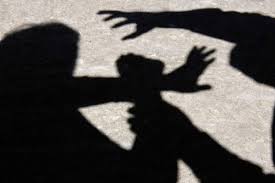By Dayanara Vega
School violence is considered an intentional act or omission that is hurtful and practiced among members of the educational community (students, professors, parents, entry-level employees) and that is done within the physical space of school facilities and other spaces directly related to the school (areas surrounding the school or places where extracurricular acitivies are carried out).
An extreme and characteristic form of school violence present among students is school bullying.
Scientific studies mark the following as principal risk factors that give rise to school violence in the lives of members of the educational community:
– Social exclusion or the feeling of being excluded
– The absence of boundaries for proper social behavior
– The constant exposure to violence reflected in social media, which in Cuba is observed in TV serials and certain novels that superficially touch on the theme.
– The integration into gangs that use violence as a form of ordinary behavior.
– The justification of violence in society or in the social atmosphere to which that person belongs.
– Family problems such as violence (divorce, domestic violence)
School bullying can become physical.
School assault (also known as school harassment or by the English term, “bullying”) is any form of psychological, verbal, or physical mistreatment repeatedly practiced among members of the school for a certain amount of time.
Statistically, the dominant form of violence is emotional and is mainly in the class and the courtyard of the school. The protagonists tend to be boys and girls on the verge of entering adolescence (12-13 years), with a slightly higher percentage of girls being the victims.
School bullying is a type of torture, methodical and systematic, in which the agressor abuses the victim often with silence, indifference, or with the complicity of other schoolmates.
This kind of violence is characterized by a repetition that aims to intimidate the victim, implicating an abuse of power exercised by a more powerful aggresor (the strength may be real or perceived). The mistreated subject is left physically and emotionally exposed before his aggresor, generating a series of psychological consequences (although these do not form part of the diagnosis); it is common for the victim to be afraid to attend school and to demonstrate nervousness, sadness, or loneliness in his or her daily life. In some cases, the difficulty of the situation can give rise to suicidal thoughts and their materialization, as consequences of harassment.
In our country we customarily blame external sources for social indiscipline and do not look within ourselves to see how we have lost values that are at the core of the family; the fundamental unit of society.
The state does not take responsibility since the Geneva Convention exists to protect youth and adolescents and Cuba forms a part of it yet does not enact real judicial actions whose aim is to put the brakes on this social evil.
Translated by: Bianca Martinez
7 July 2014

